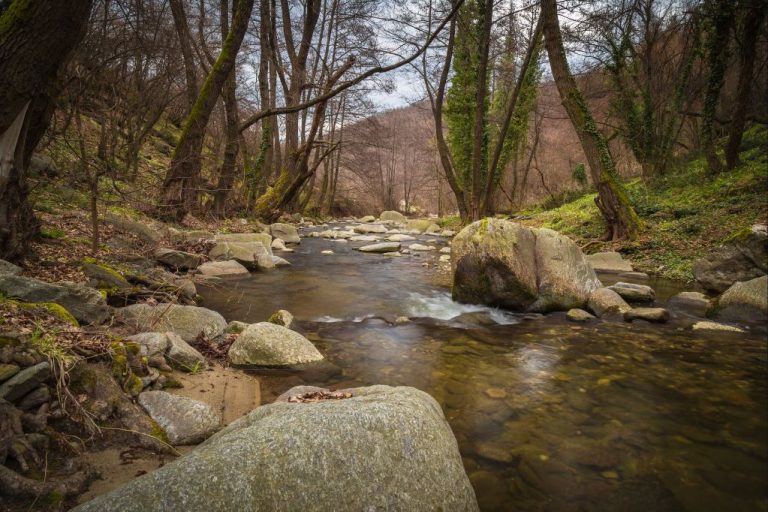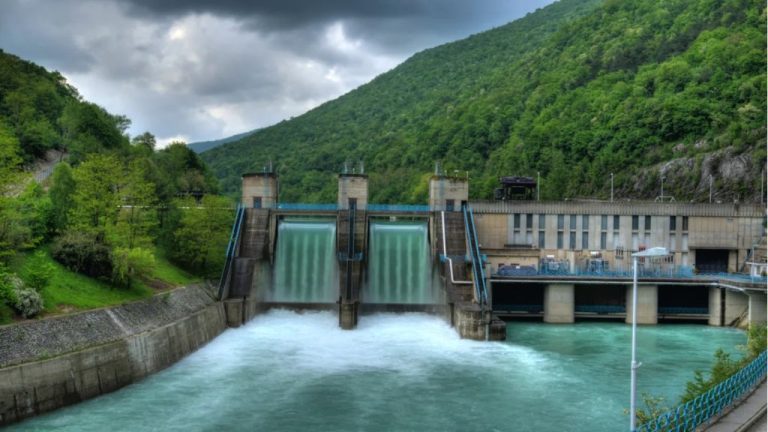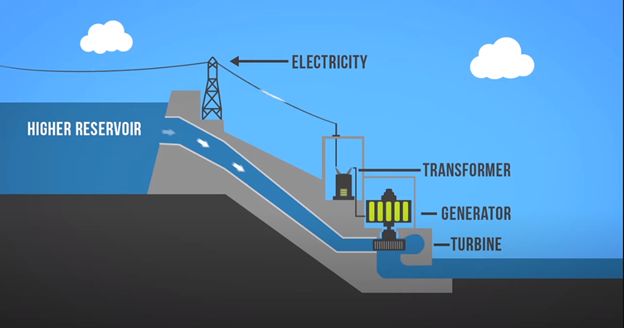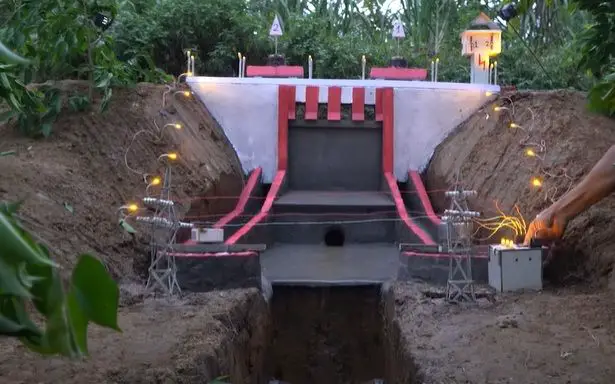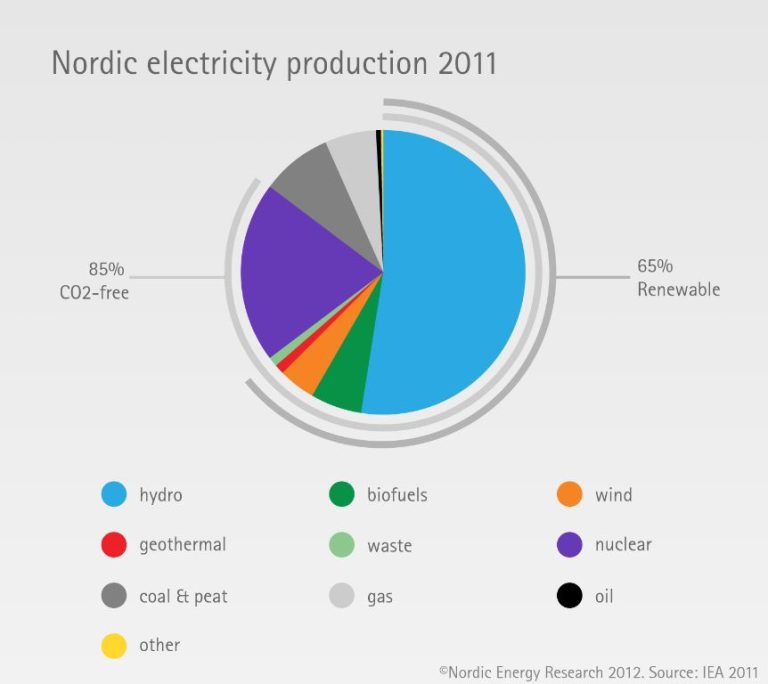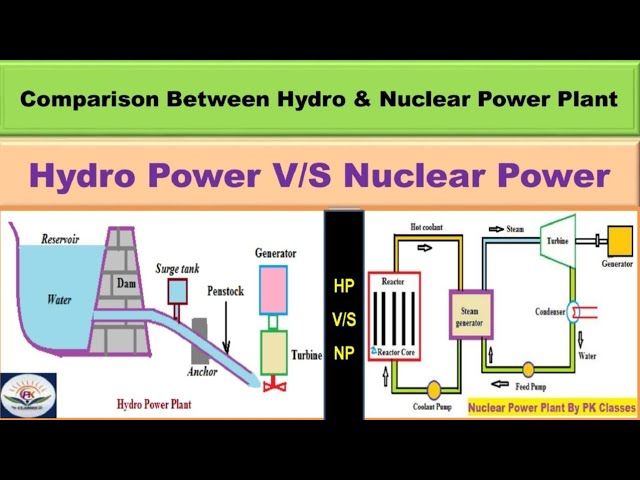What Is Hydro Derived From?
Hydro refers to water or hydropower which is a renewable form of energy generated from moving water (1). Water is an abundant natural resource that flows in rivers and streams around the world. When flowing water hits turbine blades attached to generators, it produces electricity through a process called hydroelectric power or hydropower for short. Hydroelectricity is considered a clean and renewable source of energy as it relies on the water cycle and gravity to generate electricity, without producing air pollution or greenhouse gases (2). Hydropower supplies around 16% of the world’s electricity and is a major source of renewable power globally (3). Understanding where hydroelectricity comes from and how it works provides important context on this important renewable energy source.
Hydroelectric Power
Hydroelectric power plants use the energy from flowing water to generate electricity. The water, usually stored in a reservoir behind a dam, flows through an intake and pushes against turbine blades inside the hydroelectric generator. As the blades spin, they turn a shaft connected to electromagnets that spin between magnets to generate electricity. This is known as electromagnetic induction. The moving water contains kinetic energy from the force of gravity as it flows downhill. This kinetic energy gets transferred to the turbine and activates the generator to produce electricity. Essentially, hydroelectric plants convert the kinetic energy from flowing water into electrical energy (Renewable Energy Hub). The amount of electricity that can be generated depends on the volume and speed of the water flow. Faster moving water pushes the turbine blades with greater force, spinning the generator shaft faster to produce more electricity.
Dams
Dams play a critical role in harnessing the energy from flowing water for hydroelectric power. A hydroelectric dam is a large structure built to hold back and control the flow of water in a river or stream. According to the Energy Education website, “A hydroelectric dam is one of the major components of a hydroelectric facility. A dam is a large, man-made structure built to contain some body of water.”
Dams create reservoirs where water can be stored at higher elevations. When the water is released from the reservoir, it flows through turbines connected to generators to produce electricity. As the U.S. Department of Energy explains, “A conventional dam holds water in a man-made lake, or reservoir, behind it. When water is released through the dam, it spins a turbine connected to a generator to produce electricity.”
By controlling the flow of water with dams, hydroelectric power plants can generate electricity on demand to meet changing energy needs. Dams also allow hydroelectric facilities to store energy by pumping water back into reservoirs during times of low electricity demand. Overall, dams are essential components of hydroelectric projects that make the generation of renewable power from flowing water possible.
Sources:
https://energyeducation.ca/encyclopedia/Hydroelectric_dam
https://www.tva.com/energy/our-power-system/hydroelectric/how-hydroelectric-power-works
Rivers
Rivers provide a continuous source of flowing water that can be harnessed for hydroelectric power generation. The flow of a river is driven by gravity as water moves from higher elevation to lower elevation. The water cycle continuously replenishes rivers through precipitation, melting snowpack, surface runoff, and groundwater discharge. As a result, rivers have a renewable supply of water that hydro plants can utilize to generate electricity (https://www.tandfonline.com/doi/full/10.1080/14747731.2022.2098668).
Typically, a dam is constructed on a river to regulate water flow and create a reservoir. The dam intakes water from the river and directs it through large pipes called penstocks towards hydro turbines in the power station downstream. As the river water flows through the turbines, it causes them to spin, which turns generators to produce electricity. After passing through the turbines, the water is discharged back into the river downstream. This provides a continuous loop of flowing river water being harnessed for renewable hydroelectricity generation.
The amount of electricity that can be generated depends on the volume of water flow in the river and the height difference (head) between the reservoir surface and the turbines. Rivers with high volumes of water flow and high head levels are ideal for hydroelectric dam installations. The force of the falling water proportional to the head turns the turbines, so more head allows more electricity generation. High flow rates mean more water volume passing through the turbines. Rivers are a prime renewable energy source for hydropower due to their continuous flows and high head levels after dams are constructed.
Water Cycle
The water cycle is the continuous movement of water between the atmosphere, land, and bodies of water on Earth. This cycle provides renewable water sources that are harnessed for hydroelectric power generation.
The sun’s energy causes water on the surface of oceans, lakes, and rivers to evaporate and rise into the atmosphere as water vapor. This water vapor condenses to form clouds and eventually precipitates back down to Earth as rain, snow, or other forms of precipitation. This precipitation collects in bodies of water like rivers and streams, renewing the available water supply.1
The force of gravity causes the precipitation that falls at high elevations to flow down through rivers and streams. This flowing water contains kinetic energy that can be captured by hydroelectric dams and converted into electricity. So in essence, the renewable cycling of water between the atmosphere and earth’s surface drives the renewable production of hydroelectricity.
Precipitation
Precipitation in the form of rainfall and snowmelt provides the key water sources that enable hydroelectric generation. As water from precipitation flows downstream into rivers and streams, it builds up potential energy due to gravity. Dams are constructed to capture and control this flowing water, and the force of the water is used to turn turbines connected to generators to produce electricity.
Hydroelectric generation relies heavily on patterns of precipitation, as rainfall and melting snowpack directly affect the water flow rate and volume available for power production. Seasonal cycles of precipitation mean that hydroelectric output is typically highest in spring when melting snow and increased rainfall lead to greater runoff and water flows.[1]
Periods of low precipitation, such as droughts, can severely reduce the water flow rates in impacted regions, lowering hydroelectric generation. Changes in long-term precipitation patterns due to climate change may also affect the viability of hydroelectric power in some areas.
Gravity
Gravity plays an essential role in hydroelectric power generation. As water flows down from higher elevations, such as in rivers or waterfalls, the force of gravity accelerates the water, giving it kinetic energy. Hydroelectric dams are built to capture and harness this energy from gravity and moving water.
Dams are constructed on rivers at higher elevations and are used to create reservoirs. When the floodgates are opened, gravity pulls the water stored in the reservoir downhill through pipes called penstocks. The flowing water rotates turbines located at the bottom of the dam. As the turbines spin, they turn generators that convert the mechanical energy into electrical energy.
Gravity enables the potential energy stored in the reservoirs of water held behind dams to be converted into electricity. The higher the dam and reservoir are located compared to the turbines below, the more gravitational potential energy is available to be transformed into kinetic energy as the water falls downward when released. Overall, gravity is the driving force that allows moving water from higher elevations to do work and generate power at hydroelectric plants.
According to Wired, gravity storage solutions are also being developed to store energy by lifting weights and then releasing them to turn generators when electricity demand peaks.
Tidal Power
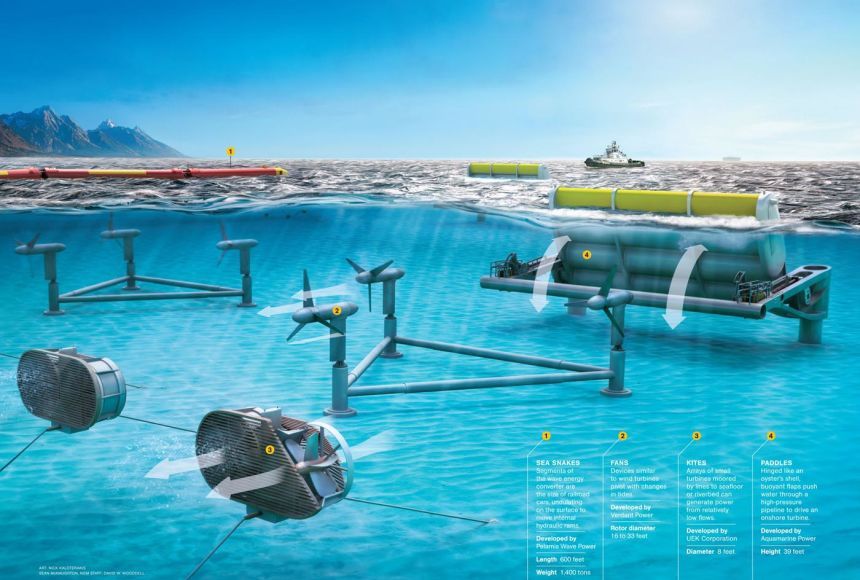
Tidal power is another form of hydroelectric power that harnesses the energy from the natural rise and fall of tides. As the tides flow in and out, they cause large amounts of water to flow through estuaries and tidal areas. This movement of massive amounts of water can be captured and used to generate electricity.
Tidal power stations are typically built across an estuary or tidal basin. As the tide rises, gates are opened to allow water to flow into the basin through turbines. The motion of the tidal water spins the turbine blades which then turns a generator to produce electricity. When the tide falls, the gates are closed, trapping water in the basin. This water is then released back through the turbines as the tide begins to rise again, generating more power. This cyclic rise and fall of the tides can produce predictable and reliable electricity day and night (Electricity Forum).
Compared to other renewables like solar or wind, tidal power offers the advantage of being completely predictable as the tides follow set patterns. However, tidal power facilities are expensive to construct and must be built in specific coastal locations with high tidal ranges. Overall, tidal power remains a small but growing contributor to renewable energy production worldwide.
1. Introduction to Hydro
Hydroelectric power, or hydro power, is a form of renewable energy that utilizes the natural flow of water to generate electricity. It is produced when falling or fast-moving water spins a turbine connected to a generator. Hydroelectric dams convert the potential energy of contained water into kinetic energy to produce power.
Hydroelectricity is one of the oldest and most widely-used forms of renewable energy. In 2020, hydro accounted for over 15% of total U.S. utility-scale electricity generation and 40% of all renewable energy produced in the country.
2. Hydroelectric Power
There are several types of hydroelectric facilities, including:
- Dams – Most common type, uses reservoirs created by damming rivers.
- Run-of-river – Channels portion of river through penstock.
- Pumped storage – Stores energy by pumping water uphill to reservoir.
Advantages of hydro power include its reliability, low operating costs, and ability to quickly adjust output to meet sudden shifts in energy demand. It also does not create air pollution or greenhouse gas emissions.
However, hydro projects can disrupt ecosystems and wildlife habitats. They often require constructing large dams which flood land and disrupt river flows. There are also limits suitable hydro sites.
3. Dams
Most hydroelectric power is generated by dammed hydro projects. These dams help create reservoirs that store water, control river flows, and provide water pressure to spin turbines. Major types of dam configurations used in hydro facilities include:
- Arch dams – Curved dams that transfer water pressure through the arch shape.
- Gravity dams – Use their own weight and gravity to resist water pressure.
- Embankment dams – Made of earthfill or rock-fill material.
Some notable large hydroelectric dams around the world include the Three Gorges Dam in China, Itaipu Dam on the Brazil/Paraguay border, and Hoover Dam in the U.S. state of Nevada.
4. Rivers
Rivers are the source of the water flow that powers hydroelectric generation. The most ideal rivers for hydro have high flow rates and elevations that provide strong water pressure. High flow rivers that originate in mountainous regions and produce substantial runoff provide the best hydro resources.
Some major rivers with significant hydroelectric dam development include the Yangtze, Rhine, Columbia, Tennessee, Niagara, and Churchill rivers. However, almost any river can potentially support at least small-scale hydro projects.
5. Water Cycle
The renewable nature of hydropower is largely due to the water cycle, also known as the hydrologic cycle. This is the continuous circulation of water around the globe through evaporation, precipitation, runoff, ground seepage, and drainage flows.
Solar energy and gravity drive the water cycle. Heat from the sun causes water on the Earth’s surface to evaporate and form clouds. This water vapor later condenses and falls back to the surface as precipitation. Gravity causes it to flow downhill through streams and rivers back into the oceans.
This renewable cycling of water allows hydro dams to produce electricity year after year without depleting water resources.
6. Precipitation
Precipitation, or condensed water vapor that falls from clouds, is a key driver of hydroelectricity. It provides the water inputs that feed rivers and fill reservoirs behind dams.
Areas with higher precipitation totals and more frequent rainfall produce greater runoff flows for hydro dams. This makes rainfall patterns and storm activity major factors determining hydroelectric potential for a river basin or region.
Snowfall and melting snowpack are also significant forms of precipitation that contribute to river flows, especially for mountainous areas and high latitude rivers.
7. Gravity
Gravity is a critical force for enabling hydropower. The downward gravitational pull on water causes it to flow from high elevation sources to lower elevations. This creates the falling or fast-moving water flows that are needed to spin hydro turbines.
Gravity-fed water flows from upstream mountainous watersheds to downstream rivers is ideal for hydroelectric generation. The steeper the elevation drop over a short distance, the stronger the gravitational force on the water.
Pumped storage hydro facilities even take advantage of gravity by using excess electricity to pump water uphill into reservoirs. Then when energy demand is high, they release this water downhill through turbines.
8. Hydro Power Usage
China leads the world in hydroelectricity usage, generating over 1,247 terawatt-hours in 2020. This represents around 28% of global hydroelectricity production. The Three Gorges Dam on the Yangtze River is China’s largest hydro plant. [1]
Other top hydropower producing countries include Brazil at #2 with 430 TWh, Canada #3 with 383 TWh, the United States #4 with 260 TWh, and Russia #5 with 179 TWh. The Itaipu dam shared by Brazil and Paraguay is the second largest hydroelectric power plant globally. [2]
In terms of percentage of total electricity from hydro, Norway generates over 95% from hydro while Brazil produces 65%. Canada gets 59% of its electricity from hydroelectric dams. [2]
Globally, installed hydroelectric capacity was around 1,308 gigawatts in 2020. This generated over 4,300 TWh of hydro electricity, meeting approximately 16% of worldwide electricity demand that year.
9. Conclusion
In summary, falling or flowing water is the source of hydroelectric power. Precipitation, gravity, dams, and rivers all play key roles in collecting water and creating the potential energy that is harnessed by hydroelectric turbines and generators. Hydroelectricity provides a major renewable energy source for many countries, with China being the world’s largest producer and consumer.
Conclusion
In conclusion, hydroelectric power is an important renewable energy source that is derived from the natural water cycle. Hydroelectric dams utilize gravity by channeling the downhill flow of water through turbines, generating clean electricity. The water in rivers and oceans originates from precipitation that condensed from atmospheric water vapor. This vapor was evaporated into the air through evapotranspiration and solar heating. Therefore, the ultimate source of hydro power is the sun’s energy. By harnessing the power of water as it moves through the water cycle from ocean to air to land, hydroelectricity provides a sustainable way to meet our energy needs while reducing dependence on fossil fuels.
In summary, hydroelectricity comes from the kinetic energy of naturally flowing water, which is part of Earth’s water cycle. The water cycle is driven by the sun, making hydropower an indirect form of solar energy. Dams simply provide a way to capture the gravitational potential energy of water as it flows downstream.

